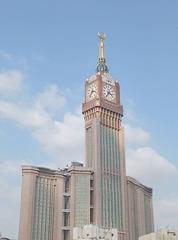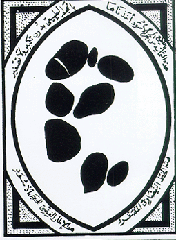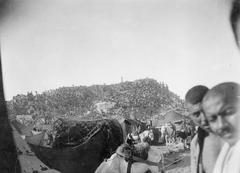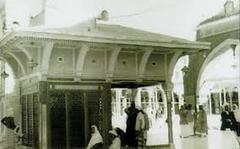
Mosque of the Jinn Mecca: Visiting Hours, Tickets, and Travel Guide
Date: 04/07/2025
Introduction: The Mosque of the Jinn—History and Cultural Significance
The Mosque of the Jinn (Masjid al-Jinn), located in the heart of Mecca, Saudi Arabia, is a spiritually and historically significant Islamic site. This mosque commemorates the extraordinary event where a group of jinn—supernatural beings created from smokeless fire as per Islamic belief—listened to the Prophet Muhammad’s recitation of the Quran, embraced Islam, and pledged their allegiance to him. This event is referenced in Surah al-Jinn (Chapter 72 of the Quran), highlighting the universal scope of Islam’s message. The mosque’s proximity to landmarks like the Grand Mosque (Masjid al-Haram) and the historic Jannat al-Mu’alla Cemetery further cements its religious and cultural relevance (Wikipedia; makkah2madinah.com; 3rooj.com).
Constructed originally in the 18th century, the mosque has undergone several renovations to harmonize its historical character with modern amenities. Its minimalist design, slender minaret, and focus on functionality reflect Islamic values of simplicity and devotion. The mosque is open daily for the five obligatory prayers and is accessible only to Muslims, in accordance with Mecca’s entry regulations. Visitors find not just a place of worship but a site for reflection and connection to early Islamic history (Saudi Tourism; Saudipedia; Welcome Saudi).
This guide provides detailed information on visiting hours, accessibility, etiquette, nearby attractions, and practical travel tips to enrich your experience at the Mosque of the Jinn (destinationksa.com).
Table of Contents
- Historical Background and Significance
- Architectural Features and Facilities
- Visiting Information
- Visitor Experience and Practical Guidance
- Nearby Attractions
- Frequently Asked Questions (FAQ)
- Summary and Recommendations
- References
Historical Background and Significance
The Foundational Event
According to Islamic tradition, the Mosque of the Jinn marks the place where a group of jinn heard the Prophet Muhammad recite the Quran and, deeply moved, accepted Islam and pledged their allegiance to him (makkah2madinah.com). This pivotal moment is reflected in Surah al-Jinn (Chapter 72 of the Quran), emphasizing the universality of the Islamic message and its extension to all beings.
Alternative Names and Location
The mosque is also known as Masjid al-Bayah (Mosque of Allegiance) and Masjid al-Ḥaras (Mosque of the Guards) due to its historical roles. It is situated near the Jannat al-Mu’alla Cemetery and is within walking distance of the Grand Mosque, making it an accessible spiritual destination for pilgrims (3rooj.com).
Religious and Theological Significance
The mosque serves as a tangible reminder of Islam’s inclusive message. Islamic scholars highlight that jinn, like humans, are accountable for their deeds and can accept faith. The events at this mosque illustrate the reach of Islamic teachings beyond humanity, enriching its spiritual aura (makkah2madinah.com).
Architectural Features and Facilities
Exterior and Interior Design
The Mosque of the Jinn is characterized by a simple exterior—whitewashed walls, arched windows, and a single slender minaret of approximately 15 meters. The mosque’s understated size and minimal ornamentation echo its role as a neighborhood mosque rather than a grand congregation center (Saudi Tourism).
Inside, the mosque features a clean, open prayer hall with traditional carpets, a modest mihrab, and subtle geometric decorations. The space is efficiently lit with energy-saving fixtures, and a small semi-dome above the mihrab highlights the prayer direction.
Facilities
- Ablution Areas: Separate, modern wudu stations for men and women.
- Prayer Spaces: Capacity for about 200 worshippers, with shaded courtyard overflow during busy periods.
- Accessibility: Ramps and step-free entry points accommodate elderly and disabled visitors.
- Restrooms: Maintained hygiene facilities with hand sanitizers.
- Drinking Water and Shade: Free water dispensers and seasonal shade structures.
- Security: Surveillance systems, security staff, and clear signage enhance safety.
Environmental Features
Recent renovations include energy-efficient lighting, water-saving fixtures, and improved waste management, reflecting a commitment to sustainability.
Visiting Information
Location and Accessibility
- Address: 8464 Al Masjid Al Haram Road, As Sulaymaniyyah, Mecca, Saudi Arabia.
- Access: Near the Grand Mosque and Jannat al-Mu’alla Cemetery. Public buses, taxis, and organized pilgrim tours serve the area.
- Parking: Limited; walking or shuttle use is recommended during peak periods (Saudipedia).
Visiting Hours
- Open: Daily, generally from dawn (Fajr) to late evening (Isha), aligned with prayer times.
- Peak Periods: Ramadan and Hajj season may affect hours and crowd levels.
- Note: Only Muslims may enter Mecca and its religious sites.
Entry and Ticketing
- Entry Fee: None. No tickets required.
- Identification: Carry appropriate documentation; entry is restricted to Muslims (Tourist Authority).
Guided Tours
While there are no official mosque-led tours, many local operators include the Mosque of the Jinn in their Mecca historical site itineraries, especially during Hajj and Umrah.
Photography Policy
- Exterior and Courtyard: Photography is usually permitted.
- Prayer Hall: Be discreet and avoid disturbing worshippers; always ask before photographing people.
Visitor Experience and Practical Guidance
Atmosphere and Worship Practices
The mosque is open for the five daily prayers and exudes a tranquil, spiritual atmosphere. The proximity of the Grand Mosque means the call to prayer is audible, deepening the sense of reverence. Visitors are encouraged to reflect quietly and respect the sanctity of the site (Saudipedia).
Dress Code and Etiquette
- Men: Long trousers and shirts covering arms and torso.
- Women: Loose, ankle-length dresses; arms and hair covered.
- General: Remove shoes before entering. Silence and respectful conduct are expected. Avoid bringing food or drink inside.
Facilities and Amenities
- Prayer Hall: Air-conditioned, with prayer carpets and fans.
- Ablution Stations: Clean and modern.
- Restrooms: Located nearby.
- Shops and Restaurants: Numerous options in the surrounding area.
Safety and Security
- Be vigilant for personal belongings, especially during busy periods.
- Stay hydrated and seek shade during hot months.
- Use basic Arabic phrases or a translation app if needed; English is commonly spoken in hotels and shops.
Nearby Attractions
- Jannat al-Mu’alla Cemetery: Adjacent to the mosque, a significant Islamic burial ground.
- Masjid al-Haram: The holiest mosque in Islam, with the Kaaba at its center.
- Safa and Marwa Hills: Integral to Hajj and Umrah rituals.
- Local Markets and Dining: Experience traditional cuisine and shopping (Welcome Saudi).
Frequently Asked Questions (FAQ)
Q: What are the visiting hours for the Mosque of the Jinn?
A: Open daily, generally from dawn to late evening, aligned with the five daily prayers.
Q: Is there an entry fee or ticket required?
A: No, entry is free; no tickets are required.
Q: Can non-Muslims visit the Mosque of the Jinn?
A: No, access to Mecca and its mosques is restricted to Muslims.
Q: Are guided tours available?
A: Local tour operators often include the mosque in their historical and religious tours, especially during Hajj and Umrah.
Q: Is the mosque accessible for people with disabilities?
A: Accessibility has improved, but some physical limitations remain. Assistance may be required for those with significant mobility needs.
Q: Can I take photos inside the mosque?
A: Photography is allowed in the courtyard and exterior. Inside, be discreet and do not disturb worshippers.
Summary and Recommendations
The Mosque of the Jinn stands as a testament to the depth of Islamic tradition and the universality of its message. Its historical roots, modest architecture, and ongoing improvements make it a vital stop for pilgrims and spiritual seekers in Mecca. Plan your visit to coincide with prayer times, observe proper etiquette and dress codes, and consider exploring nearby landmarks for a comprehensive religious and cultural experience. For enhanced travel planning, utilize local guides or mobile apps such as Audiala (makkah2madinah.com; Saudipedia; Saudi Tourism).
References
- Mosque of the Jinn on Wikipedia
- 3rooj.com: The Mosque of the Jinn in Mecca
- makkah2madinah.com: Visiting Hours and Historical Significance
- Saudi Tourism: Mosque of the Jinn
- Saudipedia: Visitor Experience and Accessibility
- Welcome Saudi: Visitor Guide
- Regency Holidays Blog: Masjid Al-Jinn
- Destination KSA: Masjid Jinn





